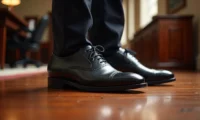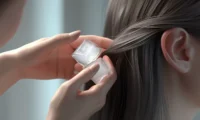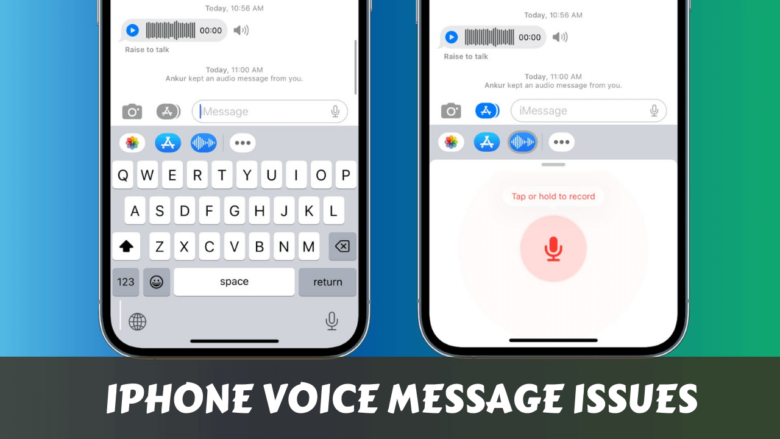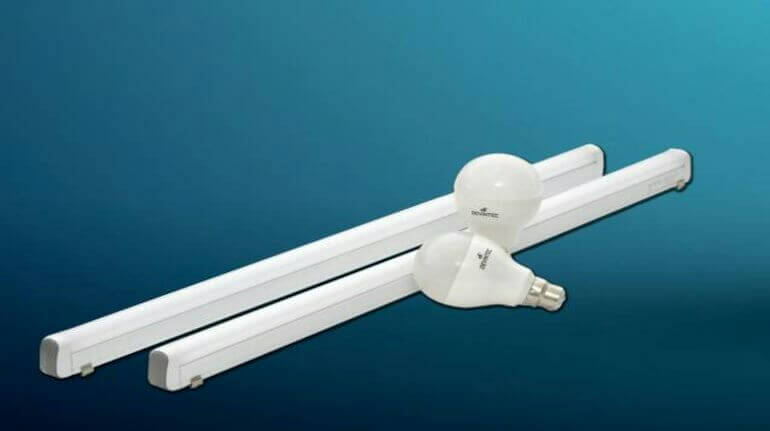You’re standing in your bathroom.
- The Real Question Every Guy Asks
- Why This Choice Actually Matters
- 💖 You Might Also Like
- Electric Beard Trimmer: The Modern Solution
- What Makes Electric Trimmers Work
- The Big Wins with Electric Trimmers
- When Electric Trimmers Shine
- The Downsides Nobody Mentions
- Scissors: The Old School Champion
- Why Scissors Still Matter in 2024
- The Scissors Advantage
- When Scissors Are Your Best Friend
- The Scissors Reality Check
- The Real-World Comparison
- Speed Test Results
- Cost Breakdown
- ✨ More Stories for You
- My Personal Setup (What Actually Works)
- Facial Hair Maintenance Precision Tools: What You Actually Need
- For Beginners
- For Experienced Guys
- For Professionals Who Need to Look Perfect
- Common Mistakes Everyone Makes
- Trimmer Mistakes
- Scissors Mistakes
- 🌟 Don't Miss These Posts
- The Science Behind Better Cuts
- Hair Growth Patterns
- Hair Texture Matters
- Advanced Techniques for Both Tools
- Trimmer Techniques
- Scissors Techniques
- Maintenance and Care
- Keeping Your Trimmer Happy
- Scissors Care
- Frequently Asked Questions
- Which is better for thick, coarse beards?
- Can I use regular scissors instead of barber scissors?
- How often should I replace trimmer blades?
- What’s the best length to start with?
- Should I trim when my beard is wet or dry?
- How do I avoid patchy-looking results?
- The Bottom Line on Electric Beard Trimmer vs Scissors
Looking at your scraggly beard.
Wondering if you should grab those old scissors or finally buy that electric trimmer everyone’s talking about.
I get it.
Been there myself.
The Real Question Every Guy Asks
Should I use an electric beard trimmer vs scissors for my facial hair maintenance?
Here’s what nobody tells you upfront.
Both tools work.
But they work differently.
And picking the wrong one for your situation is like bringing a knife to a gunfight.
Let me break this down for you.
Why This Choice Actually Matters
Your beard isn’t just hair.
It’s your face.
It’s the first thing people see.
Mess it up with the wrong tool and you’re stuck looking like you got into a fight with a lawnmower for weeks.
I learned this the hard way.
Three years ago, I tried trimming my 6-month beard with kitchen scissors.
Bad idea.
Really bad idea.
Ended up looking like I let my 5-year-old nephew give me a haircut.
💖 You Might Also Like
Electric Beard Trimmer: The Modern Solution
What Makes Electric Trimmers Work
Electric trimmers are like having a tiny barber in your hand.
They use oscillating blades that move back and forth super fast.
Usually between 3,000 to 7,000 strokes per minute.
That’s faster than you can blink.
The Big Wins with Electric Trimmers
Speed is everything.
I can trim my entire beard in 3 minutes.
Compare that to 15-20 minutes with scissors.
That’s an extra 12-17 minutes I get back every week.
Consistent length every time.
The guard settings don’t lie.
Set it to 6mm and every hair comes out at 6mm.
No guessing.
No oops moments.
Multiple length options in one tool.
Most decent trimmers come with 10+ guard settings.
From stubble to full beard.
One tool handles everything.
When Electric Trimmers Shine
- Maintenance trims (once a week touch-ups)
- Bulk removal (taking a long beard down to size)
- Creating even lengths across large areas
- Quick morning routines
- Beginners who don’t trust themselves with scissors
The Downsides Nobody Mentions
Battery dies at the worst times.
Murphy’s law says your trimmer will die right when you’re half done.
Always happens before important meetings.
Limited precision work.
Try creating a perfect mustache line with a trimmer.
Good luck.
Noise factor.
Electric trimmers sound like tiny chainsaws.
Not great if you’re trying to groom quietly in the morning.
Scissors: The Old School Champion
Why Scissors Still Matter in 2024
Scissors have been around forever for a reason.
They work.
Professional barbers still use them for detailed work.
There’s something to be said for tools that have stood the test of time.
The Scissors Advantage
Precision is unmatched.
You can cut individual hairs.
Create exact lines.
Shape specific areas with surgical accuracy.
No power needed.
Scissors work in power outages.
On camping trips.
Anywhere you need them.
Better for natural, textured looks.
Scissors create slight variations in length.
This looks more natural than the uniform cut from trimmers.
Perfect for detail work.
Mustache shaping.
Cleaning up around the ears.
Trimming stray hairs.
When Scissors Are Your Best Friend
- Detailed shaping work
- Creating natural, layered looks
- Touching up after trimmer use
- Working around sensitive areas (nose hair, ear hair)
- Professional-level precision work
The Scissors Reality Check
Time consuming.
Takes forever to trim a full beard with scissors.
I’m talking 20+ minutes for a thorough job.
Easy to mess up.
One wrong snip can ruin weeks of growth.
No undo button with scissors.
Requires skill.
There’s a learning curve.
Most guys don’t have barber-level scissor skills.
Hand fatigue.
Your hand will cramp up during longer sessions.
The Real-World Comparison
Speed Test Results
I timed myself for a month.
Full beard trim:
- Electric trimmer: 3-4 minutes
- Scissors: 18-22 minutes
Touch-up work:
- Electric trimmer: 1-2 minutes
- Scissors: 8-12 minutes
Detailed shaping:
- Electric trimmer: Not really possible
- Scissors: 5-8 minutes
Cost Breakdown
Electric Trimmers:
- Budget option: $25-50
- Mid-range: $50-100
- Professional grade: $100-200+
Quality Scissors:
- Basic barber scissors: $15-30
- Professional grade: $30-100+
Long-term costs:
- Trimmers need blade replacements, battery replacements
- Scissors just need occasional sharpening
✨ More Stories for You
My Personal Setup (What Actually Works)
Here’s what I use after trying everything.
Primary tool: Electric trimmer
For weekly maintenance and bulk work.
I use a mid-range trimmer with multiple guards.
Gets 90% of the job done fast.
Secondary tool: Small grooming scissors
For detail work and clean-up.
Essential for mustache area and stray hairs.
The combination approach wins.
Use the trimmer for speed and consistency.
Use scissors for precision and finishing touches.
Facial Hair Maintenance Precision Tools: What You Actually Need
For Beginners
Start with an electric trimmer.
Less chance of disaster.
Faster learning curve.
Add scissors later as you get more comfortable.
For Experienced Guys
Invest in both.
Good trimmer for routine maintenance.
Quality scissors for detailed work.
For Professionals Who Need to Look Perfect
Scissors-first approach.
Use trimmers only for bulk removal.
Finish everything with scissors for that barber-shop look.
Common Mistakes Everyone Makes
Trimmer Mistakes
Going too short too fast.
Start with a longer guard setting.
You can always go shorter.
You can’t add hair back.
Using a dull trimmer.
Replace blades regularly.
Dull blades pull and tug instead of cutting clean.
Rushing the job.
Even with a fast trimmer, take your time.
Especially around tricky areas.
Scissors Mistakes
Cutting wet hair.
Wet hair looks longer than it is.
Cut when dry for accurate length.
Wrong angle.
Cut parallel to your face, not straight across.
Creates a more natural look.
Not using a comb guide.
Freehand scissor work is for professionals.
Use a comb to guide your cuts.
🌟 Don't Miss These Posts
The Science Behind Better Cuts
Hair Growth Patterns
Your beard doesn’t grow evenly.
Some areas grow faster.
Some grow in different directions.
Understanding this helps you choose the right tool for each area.
Cheek hair: Usually grows down and out (trimmer works great) Chin hair: Grows in multiple directions (scissors for precision) Mustache: Grows down toward lips (scissors essential) Neck hair: Usually grows up (trimmer handles this well)
Hair Texture Matters
Coarse, thick hair:
- Trimmers might struggle
- Scissors cut through easier
- Need sharper blades either way
Fine, soft hair:
- Trimmers work great
- Scissors can be tricky (hair slips)
- Either tool works with proper technique
Advanced Techniques for Both Tools
Trimmer Techniques
The Fade Method:
Start with a longer guard.
Work down to shorter guards as you go down your face.
Creates a natural-looking gradient.
Against-the-grain trick:
Go against hair growth direction for closer cuts.
But be careful – easy to take off too much.
The Overlap Method:
Make multiple passes with slight overlaps.
Ensures even coverage without missing spots.
Scissors Techniques
The Comb-and-Cut:
Hold hair up with a comb.
Cut above the comb line.
Gives you perfect length control.
Point Cutting:
Cut into the hair at an angle instead of straight across.
Creates texture and natural variation.
The Twist Method:
Twist small sections of hair.
Cut the ends that stick out.
Great for removing bulk while keeping length.
Maintenance and Care
Keeping Your Trimmer Happy
Clean after every use.
Hair buildup kills performance.
Use the cleaning brush that comes with it.
Oil the blades monthly.
Keeps them sharp and smooth.
Most trimmers come with oil.
Charge properly.
Don’t let the battery fully die regularly.
Kills battery life faster.
Scissors Care
Keep them sharp.
Dull scissors pull and damage hair.
Professional sharpening once a year.
Clean and dry after use.
Prevents rust and buildup.
Store properly.
Use blade guards or cases.
Protects the cutting edge.
Frequently Asked Questions
Which is better for thick, coarse beards?
For bulk removal: Electric trimmer with a powerful motor.
For shaping: Scissors work better with coarse hair.
The combination approach wins again.
Can I use regular scissors instead of barber scissors?
Technically yes.
But regular scissors aren’t designed for hair.
They’ll dull faster and give messier cuts.
Spend the extra $20 on proper grooming scissors.
How often should I replace trimmer blades?
Every 6-12 months with regular use.
Signs you need new blades:
Pulling or tugging
Uneven cuts
Taking multiple passes to cut
What’s the best length to start with?
Always start longer than you think you want.
You can go shorter.
You can’t go longer without waiting weeks.
Start with 6-8mm guards and work down.
Should I trim when my beard is wet or dry?
Dry for trimmers.
Wet hair clogs the blades and gives uneven cuts.
Slightly damp for scissors.
But not soaking wet.
Damp hair is easier to control and cut evenly.
How do I avoid patchy-looking results?
Use consistent pressure.
Don’t press too hard with trimmers.
Work in sections.
Don’t try to do everything at once.
Use good lighting.
Natural light shows you exactly what you’re doing.
Take breaks.
Step back and assess your progress frequently.
The Bottom Line on Electric Beard Trimmer vs Scissors
Here’s the truth nobody wants to tell you.
The best choice isn’t one or the other.
It’s both.
Use an electric trimmer for speed and consistency.
Use scissors for precision and finishing.
This combination gives you the best of both worlds.
Fast maintenance when you need it.
Professional precision when you want it.
Start with a decent trimmer if you’re just beginning your beard journey.
Add quality scissors as your skills and confidence grow.
Your beard (and your face) will thank you for choosing the right facial hair maintenance precision tools for each job.
Remember: The best grooming tool is the one you’ll actually use consistently.






















